How Do You Get Tested for Parasites?
There are dozens of parasites that routinely infect humans. But, it can be difficult to tell if you have a parasite. Common symptoms may match other diseases…which means that parasites are often overlooked. The most reliable way to know if you have a parasite infection is to get tested for parasites.
Short Summary of this guide
- Understand who should get tested for parasites.
- Learn how parasites are found with different parasite tests.
- Understand the best parasite tests.
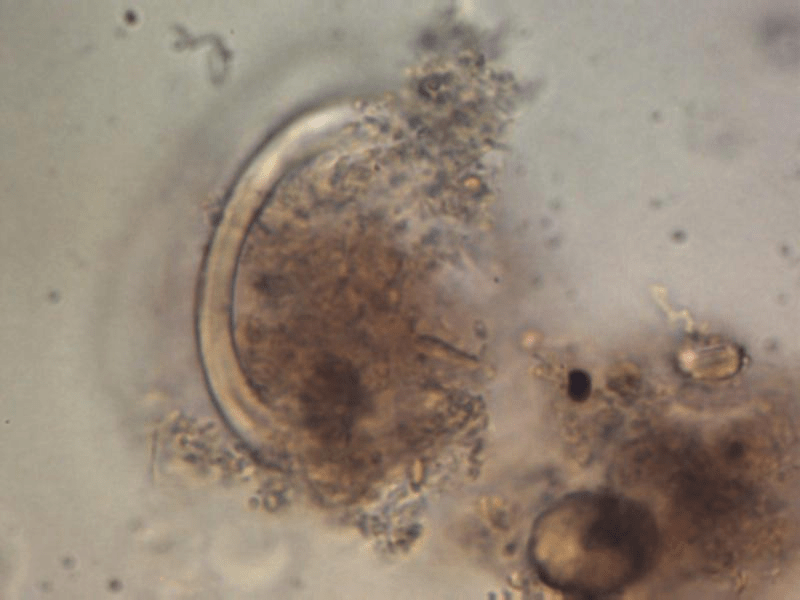
1000 times magnification Ascaris lumbricoides egg, found with Ova and Parasite Examination.
Who Should Get Tested for Parasites?
Parasitic infections are common in certain types of people. The most common carriers of parasites are:
- people with weakened immune systems
- travelers
- campers (giardia infection)
- people who have been exposed to unsanitary conditions
- People with symptoms of parasitic infection.
The CDC website stated that there were 444 Cryptosporidiosis outbreaks between 2009–2017 and that the number of outbreaks increased by about 13% per year, often causing watery diarrhea.
If the Centers for Disease Control is finding hundreds of outbreaks (clusters of at least 2 parasite infections), then it could be that 10’s of thousands of people are getting infected just from this 1 parasite.
But what about the dozens of other parasites that affect humans, how many infections of all parasites could be happening? It’s clear to me that our collective human health could be better if we worked harder to detect parasites, even in a developed country like the USA.
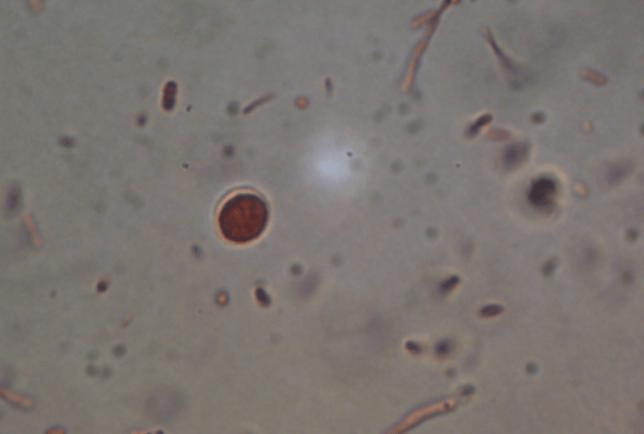
Cryptosporidium Parvum at 1000 times magnification.
Symptoms and Causes of Parasite Diseases
Parasitic diseases can cause a wide range of symptoms, from mild discomfort to severe health issues. Some of the most common symptoms include:
- diarrhea
- abdominal pain
- nausea
- vomiting
- weight loss.
The primary causes of parasite infections are consuming contaminated food or water, coming into contact with an infected animal, or being in close proximity to someone who has been infected. Knowing the symptoms and causes can help you take the necessary precautions to avoid these infections.
Parasitic Infection Symptoms
The symptoms of a parasite infection can vary depending on the specific parasite involved, but some common symptoms include diarrhea, abdominal pain, nausea, vomiting, and weight loss.
These symptoms can be quite similar to those of other gastrointestinal medical conditions, making it essential to consult a healthcare professional for proper diagnosis and treatment.
Causes
The main causes of parasite infections are tainted food, contaminated water, contact with infected animals, and contact with an infected person. Poor sanitation and hygiene practices, as well as living in or visiting areas known to have parasites, can increase the risk of infection.
To reduce the risk of infection, it’s vital to practice good hygiene, avoid consuming potentially infected food or untreated water, and be cautious when traveling to areas with known parasite presence.
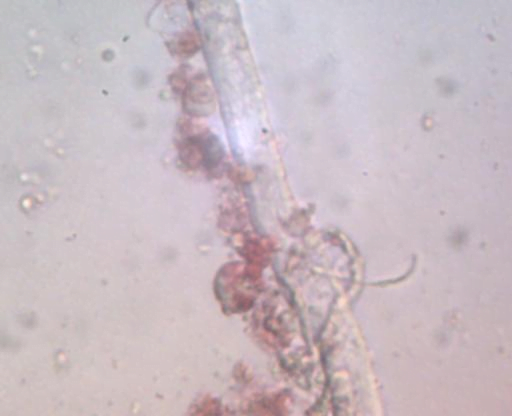
Larval nematode found from O&P exam at 200-400 times magnification.
What types of parasites can be found in a parasite exam?
Parasites have adapted to living in nearly every part of our body. Routine parasite testing covers the most common infection sites, including:
- Intestinal parasites
- Blood Parasites
- Urinary Tract Parasites
The most common parasites live in the digestive tract. But parasites can also live in blood, the urinary tract…and in extreme situations, cerebrospinal fluid, or even the brain.
What Types of Intestinal Parasites Can Be Found?
The most common parasites are found in the stool. There are 4 kinds that can be found with gut tests:
- Protozoa (Giardia Lamblia)
- Flukes (Schistosoma)
- Roundworms (Ascaris lumbricoides)
- Tapeworms (Taenia solium)

1000 times magnification dientamoeba fragilis, a protozoan parasite.
How Are Intestinal Parasites Found?
GI tract parasites are most commonly found with an ova and parasite test. Parasites are detected by seeing parasites with a microscope. Or parasitic disease may be detected indirectly by finding parasite eggs.
Protozoan parasites are found by visually seeing the single-celled parasites under a microscope, which may be in a cyst or trophozoite form.
But, parasites may also be detected by looking at parasite antigens present in the blood, and also by looking at eosinophil levels in a CBC blood test.
Lastly, parasitic worms may also be found in the large intestine during a colonoscopy. But colonoscopies miss stool parasites like protozoans. In rare cases, parasites have been found using X-rays, or a CT scan.
WHAT is the best intestinal parasite test?
The gold standard for finding intestinal parasites is the ova and parasite test. This test relies on stool samples that are analyzed with lab microscopes, concentration methods, and contrast staining methods.
The ova and parasites test can reliably find worm parasites, helminth eggs, flukes, tapeworms, and protozoan parasites. Ideally, Ph.D. parasitologists will conduct the microscopy stool examination, since they will find parasites less experienced analysts will miss.
But the ova and parasites test has 1 blind spot. The pinworm (Enterobius vermicularis), will be missed 95% of the time by the ova stool test. A pinworm infection needs to use a tape test on the perianal area to catch pinworm eggs. That tape can be analyzed by a laboratory microscope to reliably diagnose a pinworm infection.
How does a Stool ova and parasite test work?
O&P test preparation
The test preparation varies depending on which company you use. Our test asks patients to be off antiparasitic medications and herbal cleanses for 2 weeks before taking samples. Other ova and parasite tests require no test preparation. Just be sure to follow the preparation directions to get an accurate parasite exam.
stool sample collection
The ova and parasite require stool collection. Our test requires 4 days of samples, separated by at least 1 day. Parasite eggs aren’t present in every bowel movement. So multiple samples reduce the odds of a false negative result. Our lab test relies on preservatives to keep evidence of parasitic diseases fresh, while you ship your samples to us.
Other lab tests may require fresh samples, collected at the doctor’s office, or the lab. Or a parasite exam may require a single stool sample. The collection procedure varies, and you should closely follow your exam’s directions.
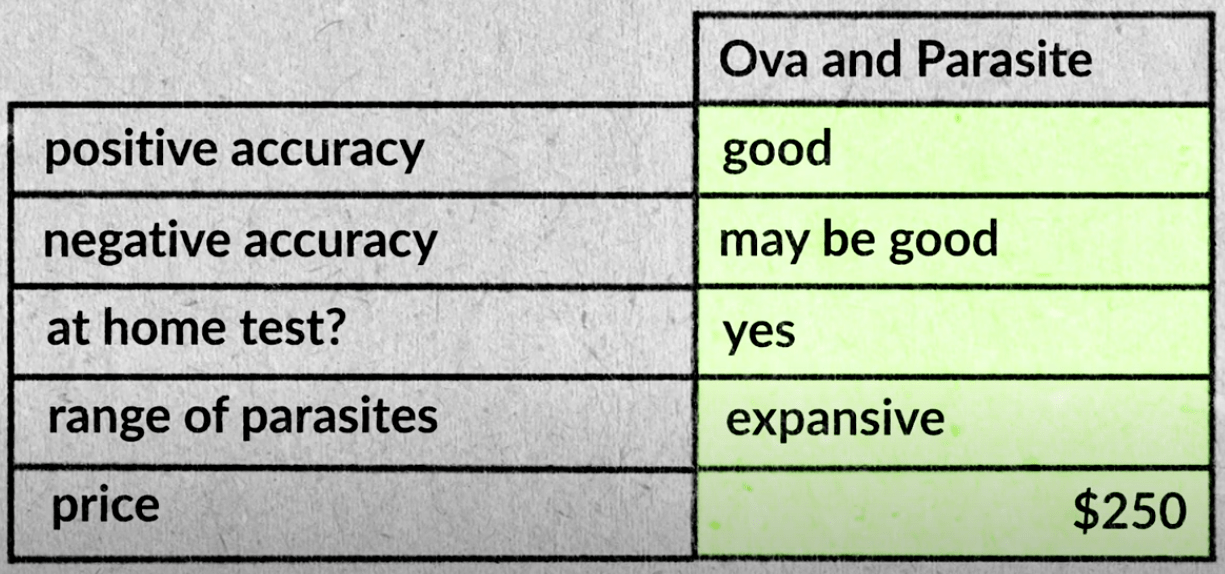
Analysis of ova and parasite test accuracy positive vs. negative meaning.
Positive result meaning
A positive result means that parasitic infections were found. The test results will also rate the severity of the infection, to give your doctor additional context for the parasite treatment.
Depending on which parasite was found, and how severe the infection is, the treatment may vary from “don’t worry about it”, all the way to “take this medication today”.
Negative test Result Meaning
A negative result for a stool test means a number of different things.
- It could mean that no treatment is needed, and there is no parasitic disease.
- It could mean that no parasite was detected because of cyclical parasitic infections, and a different stool sample would have tested positive.
- It could mean that the lab analyst is inexperienced and missed a parasite infection. In our laboratory, we only use experienced parasitologists to avoid this type of false negative test result.
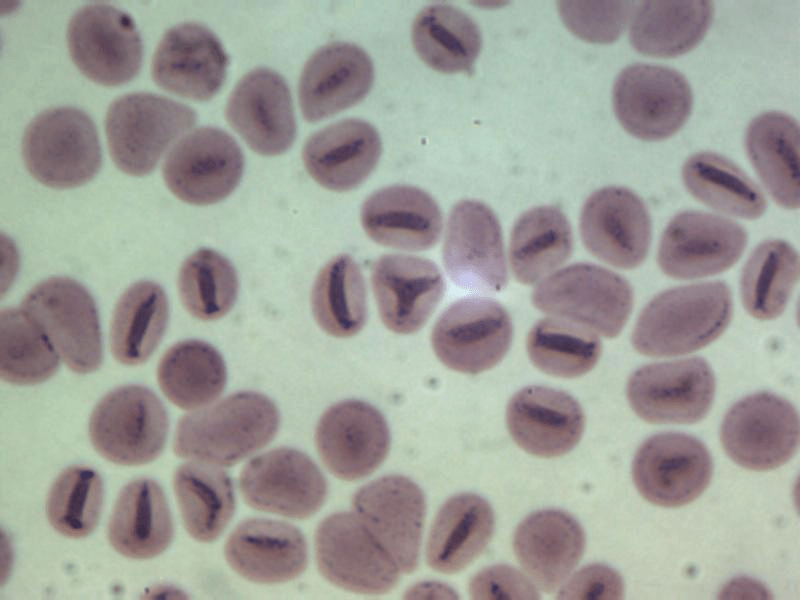
1000 times magnification of malaria blood parasite (Evan Jerkunica’s thin film blood test)
How Are blood parasites found?
Parasite infections, like malaria, can cause serious health problems. So blood parasitic tests need to be conducted in certain situations. Unsurprisingly, blood parasites are reliably found using blood tests. There are 2 types of blood parasite tests:
- Antibody blood tests, that look for signs that our immune system has been exposed to parasites.
- Microscope-based blood tests that look for the actual parasite in a blood film.
A common parasite blood test is given to pregnant women, to test for the parasite toxoplasmosis.
What is the best blood Parasite Test?
There are multiple lab tests that are the best for diagnosing blood parasite disease.
The gold standard for diagnosing some blood parasites is thin blood film parasite analysis (such as malaria). For other parasites, blood antigen parasite tests may be the gold standard.
The best blood parasite test depends on what parasite infection is present.
How Are Urine Parasites Found?
Parasites can also be found by analyzing a urine sample. The urine is then analyzed under a microscope to find parasite ovum and larval nematodes. The urine test procedure resembles the ova and parasite test, but it is performed on a urine sample, instead of stool specimens.
Schistosoma eggs are reliably found with urine analysis. Other tests such as antigens or stool sample tests may also detect Schistosoma, but they may not be as definitive as the urine exam.
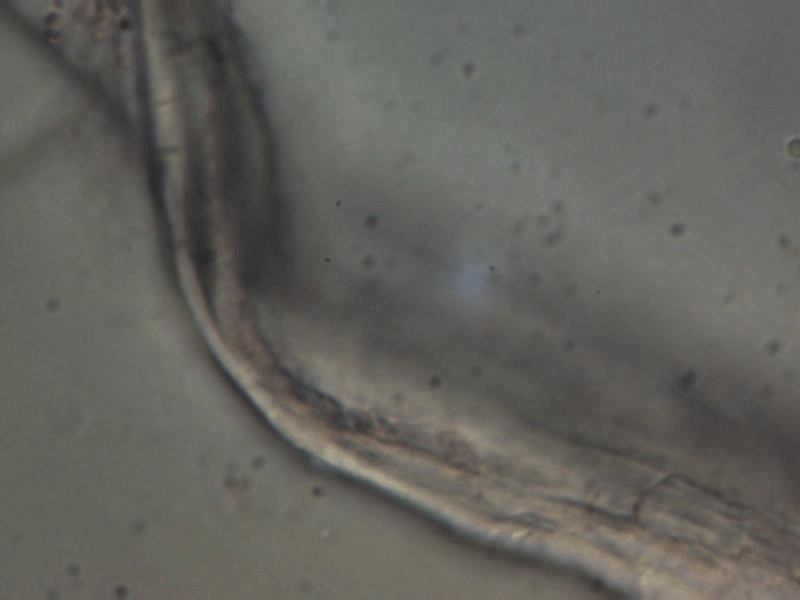
Larval Nematode at 200-400 times magnification found in urine parasite analysis
Frequently Asked Questions About Parasite Testing
How much does a parasite test cost?
The short answer is that parasite tests cost anywhere from $79, to $245 (for our comprehensive stool analysis), all the way up to $500 or even more.
The cheaper parasite exams often look for 1, 2, or 3 specific parasites in a single stool sample. Our parasite test looks for 31 different parasites in multiple stool samples. The $500+ parasite tests often look for parasite DNA analysis, so they are limited to looking for under 10 protozoan parasites, and they can’t find worms via DNA analysis.
DNA (PCR) analysis is often much better at analyzing bacteria, although the technology can also over-report small amounts of bacteria DNA in some cases.
Where can you get tested for parasites?
- Order an at-home stool ova and parasite test.
- Order the parasite test through your doctor.
- Make an appointment at a local lab for a parasite test.
There are a few different options for getting tested. Most people opt to get tested through their doctor because it is covered by insurance. If they don’t feel confident in the results, patients will then buy a more comprehensive and specialized at-home parasite test.
Why do multiple stool samples increase accuracy?
In a 1993 research paper, they found they could increase the parasites found by 275% if they analyzed 3 stool samples, instead of just 1 stool sample. This makes sense because parasitic organisms may be cyclical, meaning that they can’t always be detected because of changes in behavior. 3 stool samples seem to massively decrease false negative parasite test results, compared to 1 sample.

Our most popular at-home parasite test.
Article Sources
- CDC parasitic diseases index: https://www.cdc.gov/dpdx/az.html
- Center for Disease Control report on cryptosporidiosis outbreaks: https://www.cdc.gov/mmwr/volumes/68/wr/mm6825a3.htm
- Multiple samples increase the accuracy of standard stool ova and parasite tests: https://www.ncbi.nlm.nih.gov/pmc/articles/PMC266208/
